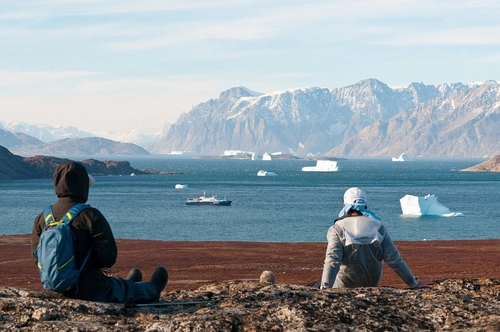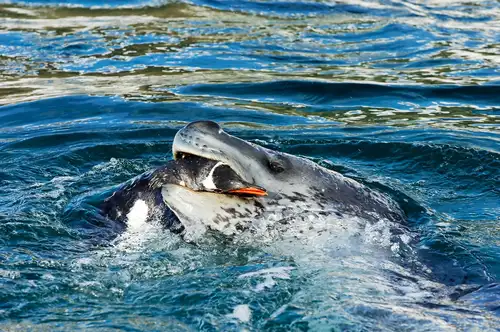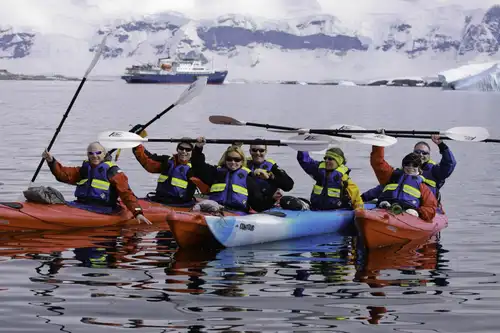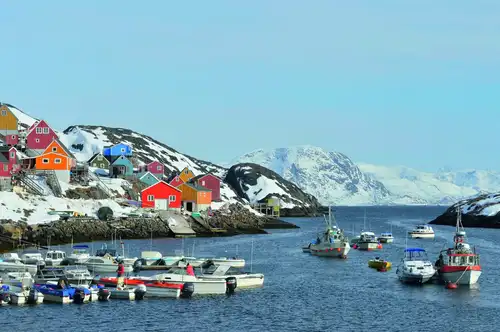Anyone who ventures to the right part of the globe can encounter vast amounts of ice, but a Greenland cruise offers something truly unique: ice sculptures hidden beneath the northern ice sheet. Scientists once thought these sculptures were rocky hills buried in ice, similar to the Ghost Mountains in Antarctica. However, it turns out that Mother Nature has crafted one of the most exclusive art exhibits in the world. These sculptures are not visible from the surface, but some scientists have managed to get a sneak peek using radar equipment.
When were the sculptures discovered?
The first evidence of these ice sculptures, often referred to as jellyroll sculptures, was found in 2010. At that time, a piece of the Petermann Glacier, approximately the size of Manhattan, broke free and slid into the ocean. Researchers discovered at least part of one of these sculptures revealed and lying on top of one section of the glacier after that incident. Interestingly, the portion of the glacier in question was moving at a pace that doubled other nearby sheets of ice. The prevailing theory is that the exposed ice sculpture began melting once it was exposed to sunlight, and the mixture of melting and refreezing sped up the glacier.
In 2014, ice-penetrating radar equipment had advanced enough to enable a team of researchers to get their first virtual look at these hidden sculptures. Although it is now believed that the unusual ice observed in 2010 was part of a sculpture, scientists at that time still thought there were hills under the ice instead of oddly shaped formations.
How big are the sculptures?
One of the most fascinating aspects of the ice sculptures hidden in Greenland is their size—they are as tall as Manhattan’s skyscrapers. Some researchers believe they are even bigger than the two tallest buildings in Manhattan combined. These massive ice formations are most likely 3,280 feet tall, painting a fascinating picture of the space that exists in Greenland between the ground and the top of the ocean.
What do the sculptures look like?
Radar imaging shows that the ice is not formed in even layers. Instead, it has the appearance of an icy jelly roll. The ice that forms these sculptures is twisted, bent, and folded, causing its location to shift. Scientists estimate that the ice is 120,000 years old, but the sculptures are much closer to the surface than typically expected. Instead of being buried 1.5 miles beneath the top ice sheet, Mother Nature’s art show is currently resting about 0.6 miles beneath the surface.
What does this teach us?
The novelty of ice formations is fascinating, but there are also some interesting insights to be gained from this discovery. For example, it is now believed that these sculptures are created due to the melting and refreezing process. This could be indicative of global warming, and it is intriguing to consider what Greenland’s glaciers might look like in the future. Scientists are also applying this new data to projections regarding glacial melting worldwide, which could provide vital warning time to areas that will eventually be affected by melting and shifting ice.
Future explorations
It is almost certain that radar methods will continue to evolve, allowing future generations of scientists to study the ice sculptures more closely. Currently, we cannot say with certainty if the ice formations are all that is down there or if they are hiding the mountains once believed to be in their place. One of the most exciting aspects of expeditions is visiting areas that still have many secrets to reveal, and Greenland is no exception. Keep this in mind the next time you embark on an arctic adventure.





Related Trips
Blog



Top 10 Tips for Packing Your Polar Photography Equipment

Going Green: Ascension Island Sea Turtles

Deep Sea Dwellers: 10 Facts about The Antarctic Giant Isopod

South Georgia in Spring

Science of the Ross Ice Shelf

Encounter with the emperor penguin in Antarctica

Weddell Sea, Shackleton’s Endurance, and New Swabia

The Wildlife of Antarctica’s Seas and Skies

The Ancient Fossil Forests of Antarctica

The Pack Ice and Polar Bears of North Spitsbergen

A Day of Basecamp in Antarctica – Paradise Harbour

Arctic Icon: 10 Facts about the Polar Bear

11 Seals You May See in Antarctica or the Arctic

Amazing Greenland

Get to Know Your Ice

The Most Enchanting Antarctica Cruise Islands

Polar Bear Sets Impressive New Diving Record

Six Seal Species You Might See On Your Greenland Cruise

15 Toothy Facts About the Atlantic Walrus






 20 Days / 19 Nights
20 Days / 19 Nights

